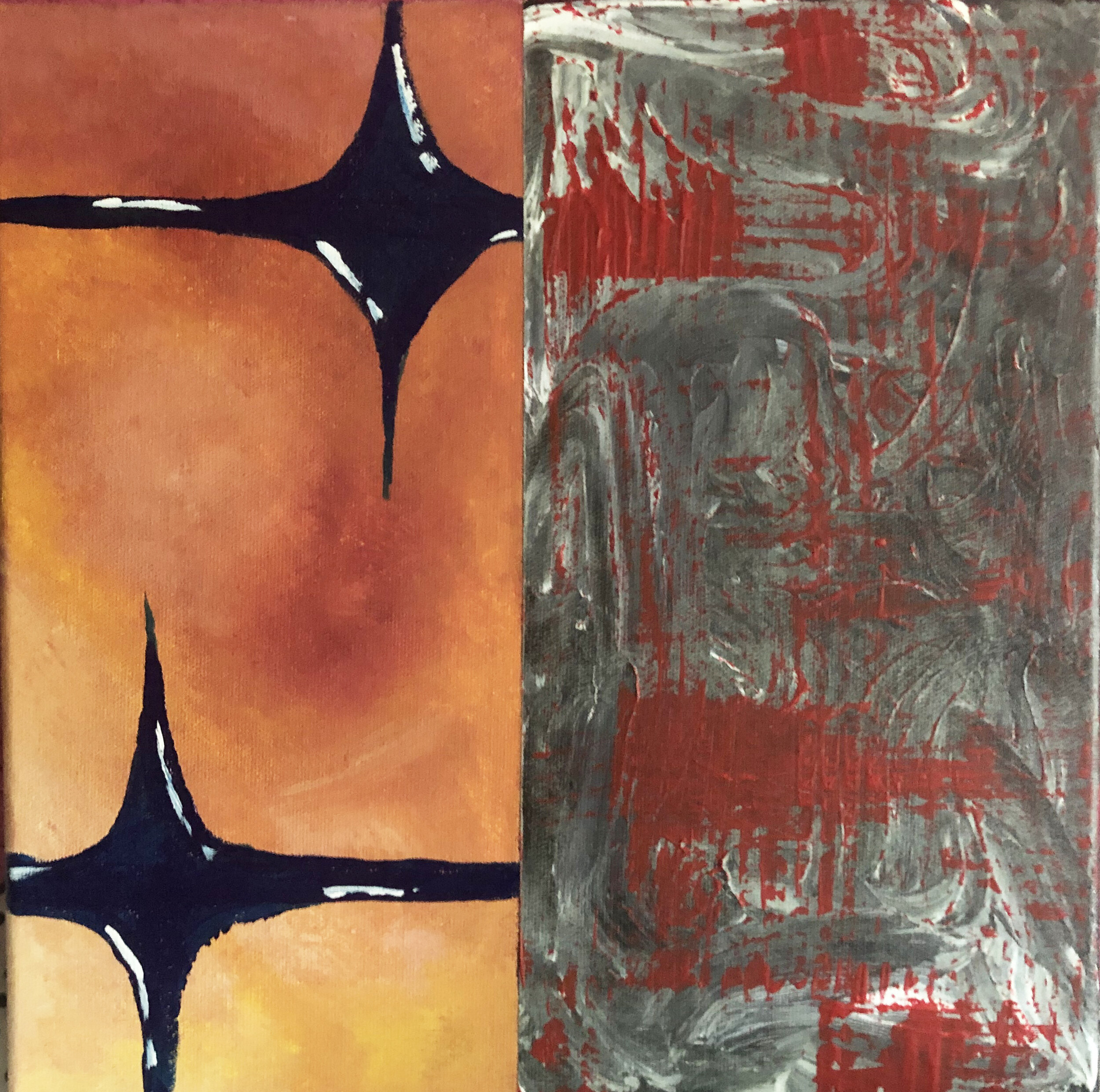Dual Abstract Self Reflections
Grade Level or Age of Participant: Adults
School, Teacher, and Classroom: Avivo Artworks with Jes Reyes
MCAD Teaching Artist: Emily Bigus
Number of Students: N/A
Overview of Project
Take a drawing or painting surface of your choosing and divide it in half using tape. On one half of the surface, paint or draw your outer self or what others see. On the other half of the surface, portray your inner self or what you feel like inside. Focus on portraying yourself with the colors you choose rather than your portrait looking like you physically.
“Big Ideas”/ Essential Question(s)
How can color be used to represent yourself?
How do you represent your inner self differently from your outer self?
Student Outcome Objectives
Students will:
Visually portray their inner and outer selves using color to represent aspects of how they identify themselves
Compare how they present themselves to others to how they see themselves
Reflect on why they are choosing the colors they do
Assessment
How do the two sections compare? How are they different?
What colors make you feel certain ways?
What colors do you feel fit with certain personality traits?
Materials
Drawing/Painting Surface: i.e. Stretched Canvas, Canvas Board, Paper
Acrylic Paint
Water Cup
Palette
Brushes
Artist Tape
Paper Towel
TEACHING ARTIST DEMO
LEARNING ACTIVITES
Introduction to Dual Abstract Self-Reflections
Explain that this involves painting your outer and inner selves
Go over materials
Paint or draw on one half of the surface depicting how you allow others to see you. If using paint, allow to dry and remove the tape.
Tape the edge of the first half off and on the second half of your surface, paint or draw what you feel like on the inside. Allow to dry and remove the tape.
Reflection
Group Reflection
Use Descriptive review protocol ( support statements with content form the paintings)
Describe what you see or notice?
How does the work make you feel? Why?
Personal reflection in sketchbooks
What do you notice about the work?
What is similar
What is different
What is a surprise to you?
Teaching Artist Reflection
Problem wise, I am worried people will be thrown off by the word “portrait” and get too caught up in trying to make something that physically looks like them.


